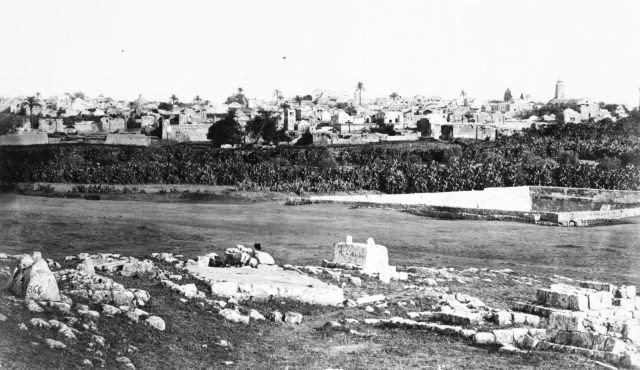How many among us have the slightest idea of what was happening in the Land of Israel during the Fatimid, Mamluk or Seljuk periods? While we’ve been busy arguing about the Nakba, all of us have been denying the Muslim past of this country.
“Filastin: It is the last one of the regions of Syria in the direction of Egypt. Its most famous cities are Ashkelon, Ramle, Gaza, Arsuf, Caesaria, Nablus, Jericho, Amman, Jaffa and Beit Guvrin.” This is the opening sentence of the section entitled “Filastin” that appears in the book “Dictionary of the Lands,” written by Muslim geographer Yaqut ibn Abdullah al-Hamawi in 1225. That was nearly 800 years before Likud MK Anat Berko raised the dubious assertion that “there isn’t even a ‘P’ in Arabic, meaning that the term ‘Palestine’ merits greater scrutiny.” She went on to explain that the Palestinians began to express their fabricated nationalism by means of adopting this name, “which was, in fact, being used by the Zionist movement.”
Berko’s baseless assertion provoked ridicule in the media. Yet the criticism of her at times bordered on the hypocritical, since denial of the Palestinian past of Israel is a widespread local phenomenon. The education system, the media and the tourism industry are all collaborators in the denial and omission of 1,400 years of Muslim history here.
Our history, as is well known to the majority of Israelis, abandoned the country following the Bar Kochba revolt, and reappeared only with the establishment of Petah Tikva in the late 19th century. Thus it is that precious few Israeli Jews, even among those who are well read in the Bible and the annals of the Zionist enterprise, know anything about the Fatimid, Mamluk or Seljuk periods?
Such subjects are studied by a limited circle of experts, and are considered in these parts to be about as esoteric as the history of the Aztecs. Similarly, the displays at archaeological sites in Israel underscore the short-lived Jewish past of the country (as the reader may recall, Jewish sovereignty existed over part of the land for only a few centuries, at most – if we include the kingdoms of both Israel and Judah). In many instances, strata from Muslim periods of history have been removed from the sites in order to showcase structures from periods of Jewish habitation. Crusader and Roman strata have been removed, as well. The idea is to de-emphasize periods of gentile rule.
The quote from the book by Yaqut cited above, can be found in “The Land of Israel in Arab Sources from the Middle Ages,” by Uri Tal, published (in Hebrew) two years ago by the Ben Zvi Institute. The book’s title is somewhat ironic because the sources it cites do not refer to the land in question as “Israel,” but rather as Falastin, as it is pronounced in Arabic. Nevertheless, the book is quite eye-opening, describing the wealth of villages and cities that existed in Falastin during periods of Arab rule.



